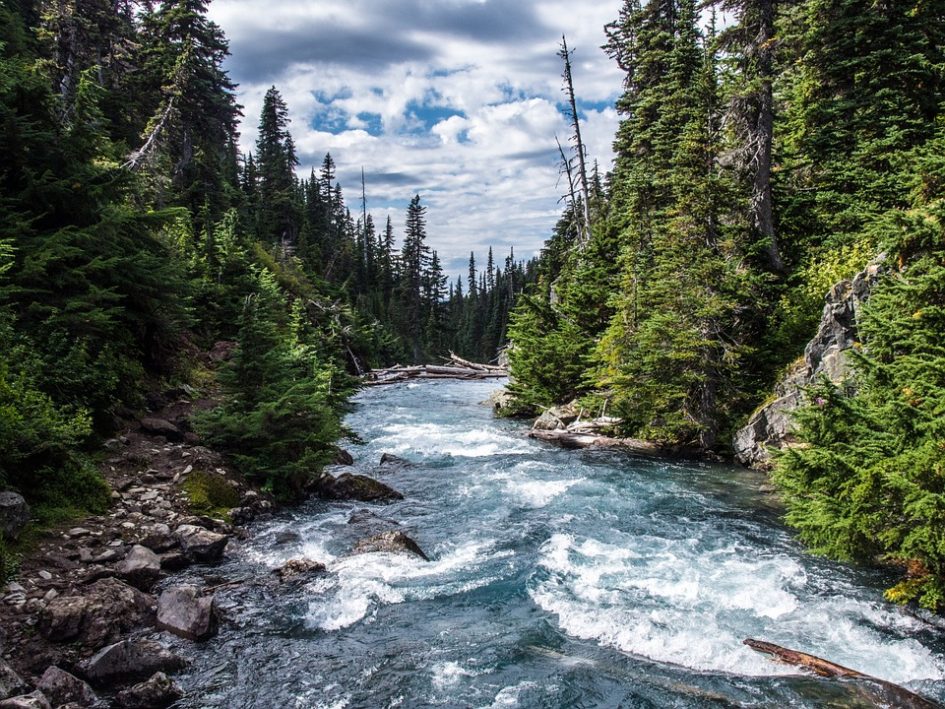Wetlands ecology and monitoring techniques internship
Each summer, about 16 internship positions are available through The Evergreen State College (TESC) for the Washington State Department of Transportation (WSDOT) in Olympia, Washington. This internship program provides hands-on field and laboratory experience. Interns collect and analyze environmental data gathered from WSDOT wetland compensatory mitigation sites.
Most field activities focus on vegetation sampling and plant identification. Interns use quantitative and qualitative monitoring methods to conduct vegetation surveys, and statistical methods to evaluate quantitative data. The internship includes other activities such as evaluating soils, hydrology and wildlife, as time allows.
Plant identification laboratory sessions, supplemental training and seminars take place on the TESC campus. Most weeks include three field days (7:15 a.m. to 4:30 p.m.) and one day at the plant lab on the TESC campus (7:30 a.m. to 4 p.m.), though there is some variation in the 11-week schedule.
Internship details
Internship Title: Wetlands Ecology and Monitoring Techniques
Position Title: Wetland Biologist Intern
Faculty Sponsor: Dylan Fischer, Ph.D., Member of The Evergreen State College Faculty
Internship Duration: June 22 – Sept. 3, 2020
Days/hours: Monday – Thursday, approximately 8-10 hours per day, 38 hrs/wk
Compensation: $3,000 taxable gross income.
Prerequisites: You must enroll in the TESC summer school and pay appropriate tuition. For additional information, please see The Evergreen State College tuition rates web site.
Credit options:
- Undergraduate credit: 6-16
- Graduate credit: 4
We evaluate interns based on participation, attendance, and performance in field and laboratory activities.
Financial assistance may be available to those who qualify.
WSDOT Contact: Kristen Andrews, Wetland Monitoring Manager.
How to apply
To apply for the wetlands internship, submit the following required materials by April 3, 2020:
- An application (.docx 73 kb) (computer generated or typewritten).
- A resume.
- A list of three references, including contact information.
We prefer to receive applications via email, though we accept hard copies.
Please send application materials to:
Kristen Andrews
WSDOT, Environmental Services
PO Box 47332
Olympia, WA 98504-7332
Important dates for 2020 internships
- April 3: Applications due to WSDOT.
- April 13 – April 16: In-person interviews conducted at WSDOT in Olympia.
- April 27: WSDOT notifies applicants of decisions.
- June 22: Internship begins.
Expectations and working conditions
- Some field days may be longer than planned depending on traffic and site location. We can’t guarantee a specific time of return from the field. For distant sites, travel time may be similar to field time. Some sites require overnight travel.
- We conduct fieldwork despite the weather – rain or shine, hot or cold. We expect interns to be appropriately equipped for the weather conditions.
- Some sites present challenging field conditions, including but not limited to uneven terrain, working in water, and working around poisonous and harmful plants. Our online (pdf 7.7 mb) and print-friendly (pdf 7.8 mb) booklet provides information about common plants to avoid (if printing, select “Print on both sides of paper” AND “Flip on short edge”).
- Candidates must commit to participating in both field (10 hours) and lab (eight hours) activities Monday through Thursday for the duration of the internship (June 22 – Sept. 3).
Candidate selection
Students from a broad variety of backgrounds are encouraged to apply. We are particularly interested in students with the following skills and academic preparation:
- A degree in (or near completion) the natural, environmental or biological sciences.
- Experience in the use of a technical plant key.
- Coursework in wetlands ecology, botany, and statistics.
- Plant and wildlife identification skills.
Required texts and equipment
Interns need the following texts and equipment before the first day of service:
Available at TESC Bookstore:
- Flora of the Pacific Northwest (Hitchcock and Cronquist) Second Edition 2018.
- Plant Identification Terminology: An Illustrated Glossary (Harris and Harris).
- Plant-dissecting kit: 2 probes, tweezers, razor knife (scalpel), 10X hand lens, and a 15 cm ruler (metric).
Other required equipment:
- Rubber knee boots (no felt soles allowed).
- Appropriate field clothes (Rain gear, sturdy pants, etc.).
- Folding pocket knife or a knife with a sheath for plant collection.
- Optional – Hip waders (no felt soles allowed).
- Optional – Binoculars and a bird guide (binoculars may be available to borrow from the Science Support Center at TESC).

